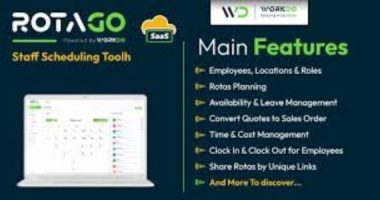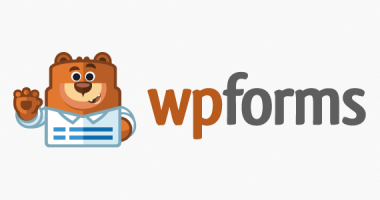Short description
Accounting and bookkeeping are essential components of financial management, providing insight into an entity’s financial health by documenting and monitoring financial statements. The two main components of accounting are bookkeeping and analysis, which involve tracking money coming in and going out of a business or person. By using this module, users can alleviate the tedious task of manual data input, avoid human mistakes, streamline tax preparation for both companies and accountants, and get detailed information on their financial health.
Key features of the module include financial charts (Profit and Loss, Income, Expense, Cashflow, and Bank Accounts), importing bank accounts, converting financial records into accounting, integrating accounting with invoices, connecting funds with bookkeeping, creating an accounting road map, connecting between Purchase Management and Accounting Modules, accounting for inventory, payroll to accounting mapping, product charting, budgeting for the initial setup, tax mapping and purchasing mapping setup, organizing stock flow diagrams, and bank rule setup.
The module also includes executive summaries, such as profit and loss statements, balance sheets, earnings and losses specific, cash flow statements, and reports on equity changes. Each account in the chart of accounts should have its name, category, and amount listed, and each account’s starting balance, transactions, and total are recorded in the general ledger. Journal entries provide a chronological listing of all transactions’ debits and credits, while past transactions detail the cash that comes in and goes out of a business.
The accounts section of Perfex CRM provides a comprehensive overview of a business’s financial data, including tax reports for sales, customer and sales data, costs and vendor reports, and budget overview reports. The “Budget vs. Actual” report shows how well the business is sticking to its budget, while the “Accounts Receivable Aging Summary” includes unpaid amounts owed by customers, bills, and outstanding invoices. The “Details of accounts Payable Aging” details outstanding invoices organized by the number of days they have been overdue. The financial statements include a summary of the bank reconciliation and preferences for the account information administration API layout. The support team is available to assist with any issues.
Always a step ahead of the rest!
One Membership with Unlimited Access
Here you can freely download plugins, themes, PHP scripts, Windows software, and other tools needed by webmasters for the popular platform.






















description
Accounting and Bookkeeping Nulled Script
Accounting and Bookkeeping module for Perfex CRM
A brief overview
The purpose of accounting is to provide insight into an entity’s financial health by documenting and monitoring financial statements. Inputting, sorting, and measuring are the steps involved, followed by the communication of transactions in several forms. Bookkeeping and analysis are the two main components of accounting. The practice of keeping track of money coming in and going out of a business or person is known as bookkeeping or financial accounting. Analysis of the transactions recorded and organized by the bookkeeper into useful reports that reveal the status of one’s finances is the next stage in accounting. You can keep a careful check on what is owed come tax time with these reports, which can monitor sales tax, profit/loss statements, and cash flow. Proper small company accounting will give you a bird’s-eye view of your financial situation, letting you make more informed choices with the information you have.
A lesson on accounting and bookkeeping and its advantages
By using this module, users may alleviate the tedious task of manual data input, avoid typical human mistakes, streamline tax preparation for both companies and accountants, and get detailed information on the financial health of their company. Time savings are one of the main benefits of this module. This module will help them maintain better records by consolidating all of their financial reporting into one online system. Automating several operations is one of the many benefits of using an accounting module for firms. This not only helps save time but also guarantees accurate and efficient financial reporting.
Key Features of the Module
Overview: Financial Charts (Profit and Loss, Income, Expense, Cashflow, and Bank Accounts)
Financial: Banking Record Financial Deal
Bring about equilibrium. Importing bank accounts Transactions involving bank accounts:
Converting financial records into accounting
Integrating Accounting with Invoices
Connecting funds with bookkeeping
Creating an Accounting Road Map
Connection between the Purchase Management and Accounting Modules
Accounting for Inventory (requires integration with the IM module)
Payroll to Accounting Mapping (requires integration with the HR Payroll module)
Product Charting Budgeting for the Initial Setup Tax Mapping and Purchasing Mapping Setup Organize stock flow diagrams. Bank Rule Setup: Automated Transaction Categorization
To document financial dealings in the general ledger, one uses journal entries.
Money moving from one account to another is known as a transfer.
A company’s chart of accounts is an inventory of all the names and account numbers that are pertinent to the business. In a standard chart of accounts, there are four main sections: assets, liabilities, income, and expenses.
The term “reconcile” refers to the procedure of comparing the module’s recorded transactions with your financial accounts.
Income and cost projections, as well as actual and projected figures, may be better tracked and compared with the help of a well-managed budget. Preparing a budget usually involves doing so for a fiscal year, and you have the option of using historical figures or providing budget amounts.
Executive Summaries:
Profit and Loss Statement Assets, liabilities, and equity are all measured in relation to where they were a year ago.
Detail of the Balance Sheet: This financial document shows all of your assets, liabilities, and equity in great detail.
The assets, liabilities, and equity of a company are summarized in the balance sheet.
Your assets, liabilities, and equity are all detailed in a balance sheet.
An individualized summary report that you create from the ground up. With further personalization choices.
The ratio of your expenditures to your overall revenue is the profit and loss statement.
Income, expenditures, and net income (profit or loss) as compared to the previous year are what we call a profit and loss statement.
Earnings and losses Specific: financial gain or loss Detail
The profit and loss statement compares your revenue, expenditures, and net income (profit or loss) for the current year to the same period last year.
Profit & Loss Statement: This statement summarizes your revenue, costs, and net income. Another name for it is an income statement.
The cash that comes in and goes out of a business (its operational operations), investments, and financing are all detailed on the cash flow statement.
Report on Equity Changes: report on equity changes.
Reports on Accounting:
Each account in your chart of accounts should have its name, category, and amount listed.
A comparison of your assets, liabilities, and equity from the previous year is shown in the balance sheet.
Your assets, liabilities, and equity are all detailed in a balance sheet.
Each account’s starting balance, transactions, and total are recorded in the general ledger.
Journal entries: a chronological listing of all transactions’ debits and credits.
Income, expenditures, and net income (profit or loss) as compared to the previous year are what we call a profit and loss statement.
Profit & Loss Statement: This statement summarizes your revenue, costs, and net income. Another name for it is an income statement.
Past transactions: past transactions
All transactions that you have made or modified during the last four days are considered recent.
The cash that comes in and goes out of a business (its operational operations), investments, and financing are all detailed on the cash flow statement.
Keep track of all the money coming in and going out of each account in your chart of accounts with this detailed transaction detail.
A chronological listing of all your financial dealings.
Your trial balance is a snapshot of the money coming in and going out of all the accounts in your chart of accounts during a certain time frame.
Tax Reports for Sales:
Each tax return box has a list of transactions, and this report details all of them. Unless you’ve specifically requested a cash basis for your tax reports, the report will continue to use accrual accounting.
Information on sales tax collected and amounts due to various tax authorities is included in the Tax Liability Report.
You may get a brief overview of the data from each section of your tax return in this report. Unless you’ve specifically requested a cash basis for your tax reports, the report will continue to use accrual accounting.
Customer and sales data:
Include the amount, date, and client or provider when you record a deposit.
A summary of your revenue by client is your net income, which is your income less your costs.
Costs and Reports from Vendors:
A detailed record of all the checks you’ve written, including the amount, date, and payee.
You may see a summary of your budgeted account balances in the budget overview report.
Earnings and losses You can see how well you are sticking to your budget in the “Budget vs. Actual” report. The report breaks down your spending by account type and shows how your actual spending compares to your budget.
Performance against profit and loss projections: this report contrasts monthly, fiscal year-to-date, and yearly planned amounts with actual amounts.
Reports on Account Expiration:
Unpaid amounts owed by customers, organized by days past due, are included in the Accounts Receivable Aging Summary.
Unpaid bills categorized by the number of days past due make up the accounts receivable aging detail.
A summary of your accounts payable aging shows all of your outstanding invoices, sorted by the number of days they are past due.
Details of accounts Payable Aging: all of your outstanding invoices organized by the number of days they have been overdue.
Financial Statements:
Summary of the Bank Reconciliation
Details of the Bank Reconciliation Preferences:
Common Categories of Account Information Administration API Layout
Demo Accounting & Bookkeeping Demo Set-up Included documentation will help you upload and activate the module inside Perfex CRM, if you are not aware on how to do it. Support Our support team is always around to help. Feel free to raise a support ticket. Guys from support department will get back to you as soon as possible with a reply, guiding you through any issues.
Related Products
The Best Products
FAQs
There are No Silly Questions — Ask, We’re answer
No, we do not offer auto-renewal. Users can renew their accounts manually whenever they want.
We offer a no-questions-asked, seven-day money-back guarantee. If you are not satisfied with your account within seven days, you can request a full refund, and we will return your money.
The software you download from us can be used indefinitely. However, to download future updates, you need to have an active subscription. If your subscription expires, you can still use the software, but you will need to purchase a new account to access updates.
Product Info
version
Updated Date
Released on
Developer Name
Category
There is a problem ?
Get Unlimited Access
Gain access to this product and enjoy limitless use of 10,000+ top-tier tools.
















Reviews
There are no reviews yet.